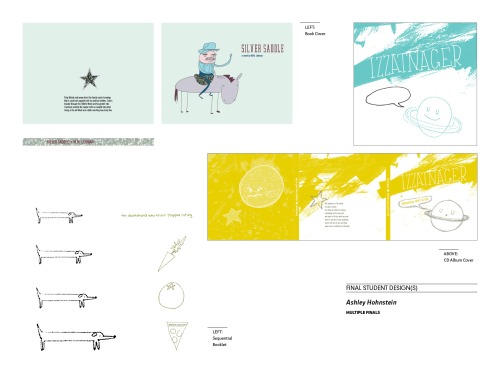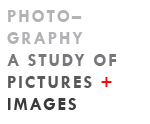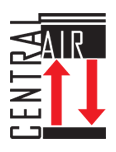Design Sprinting Workshop
Design Brief
This workshop and the dynamic use of design sprints are meant to expose first- year novice graphic design students to an open process of visual exploration. The workshop suggests a free-form process of exploration as a viable methodology to simultaneously ask questions, and solve complex design problems. Students are asked to examine concepts of the situationist dérive methodology as it pertains to graphic design. The dérive, envisioned as a playful-constructive behavior, is a tool promoting exploration and engagement through chance and opportunity. This project will first generate free-form drawings based on thematic prompts. The unedited collection then become the source material from which subsequent design solutions are governed using additional methods given at intervals through the project. Lastly, students are asked to react, reflect, and repeat the process as needed to generate additional collaborative content and collectively produce a multiple-authored thematic publication.
Project Justification
Visual Brain Dumping is a common technique associated with the traditional verbal activity of brain-storming. A “visual” brain dump utilizes the visual medium to quickly convey complex relationships. The general process begins with a predetermined set of drawings rendered in a small time frame. Working quickly the process should generate a selection of alternate views on a common theme, choosing to create additional sketches rather than refined drawings.
An alternate ideation process is sprinting. Sprinting is a technique that forces a series of com-positions in a fixed time frame. Each concept is less precious allowing an increased freedom of exploration. The design sprint is a methodology common to the concept of ‘design thinking’ in which the process of design is used to anticipate and solve problems common to users and specific members of an identified audience. Traditional design sprints use five co-dependent stages; empathize, define, ideate, prototype, and testing.
Something From Nothing workshop approaches the sprinting process in an alternative manner. This workshop is inspired by the Mistakes on Purpose workshop facilitated by Laurie Rosenwald. Participating in this workshop as a graduate student at MICA I immediately saw the experiential benefit of this methodology. Laurie’s views of this process are to encourage mistakes; “mistakes are what newness and freshness comes from.”
“this experience loosened up my uptight intellectual mindset like nothing else.”
-Ellen Lupton
DIRECTOR, GRAPHIC DESIGN MFA PROGRAM
MARYLAND INSTITUTE COLLEGE OF ARTQuote from – Mistakes on Purpose: Laurie Rosenwald
www.rosenworld.com/workshop
My ideas of design, and pedagogy as a design educator, embrace Laurie’s approach to the creative act of making. Influential designers such as Lucian Bernhard, Alexey Brodovitch, Paul Rand, Milton Glaser, Wolfgang Weingart, Chip Kidd and Mike Perry influence my views. Each designer includes non-digital, hand drawn artwork into their design process and methodology.
Professional designers and creatives debate the need to generate all forms within a project. In fact, collaboration across a diversified skill set is the key to uniquely innovative multi-discipline forms of communication. This workshop incorporates the drawings and illustrations for the entire class to collectively draw from. While each student is responsible for drafting their own solutions they also can pick up other students initial efforts. The workshop is not a popularity contest to see whose work get used more, but how drawing styles and solutions can be remixed to form alternative meaning.
Learning Outcomes
- Examine fundamental design principles associated with typography & illustration
- Investigate formal visual principles such as scale, balance, hierarchy, rhythm, color, and diagrammatic relationships
- Encourage the inherent symbiotic relationship of technical skills with visual and critical thinking
- Identify the differences of writing, hand lettering, and type design through the creation of letterforms, alphabetic character sets, numerals, monograms, signs and symbols
- Introduction to ‘design thinking’ methodology, creative ideation, problem solving, visual abstraction, and concept development
- Acknowledging a reductive historic timeline of graphic design identifying practitioners which shared a similar visual vocabulary to the self expression concepts of sprinting
- Introduction to the theory of a kit of parts through a collaborative image library
- Merging hand drawn concepts to digital solutions
- Hand drawing tools, visual style, and techniques unique to design sprinting and larger practice of creative concepting and ideation
- Introduction to Adobe® digital applications, tools and production techniques through hands on tutorial
- Examination of several broadly defined media genres; each representing a cross disciplined approach to professional practice and content delivery systems unique to graphic design
- Creative self-expression and personal explorations in the creation randomized content
- Exposure to collaborative content generation through publication design
14_ECA_A_PRO1_ECA-Workshop_project_description
[Workshop PDF File]
Workshop Resources
Online:
- http://www.designhistory.org/index.html
- http://www.designishistory.com/
- http://www.rosenworld.com/workshop.html
- http://www.mikeperrystudio.com/
- bookcoverarchive.com/
- hillmancurtis.com/artist-series/milton-glaser/
- http://www.miltonglaser.com
- http://www.paul-rand.com
Books:
- Drucker, Johanna. The visible word: experimental typography and modern art, 1909-1923.
- Lupton, Ellen, and Jennifer Cole Phillips. Graphic Design: The New Basics. New York: Princeton Architectural Press, 2008.
- Lupton, Ellen. Thinking With Type: a critical guide for designers, writers, editors, & students. New York: Princeton Architectural Press. 2004.
- Lupton, Ellen. Indie Publishing: How to Design and Produce Your Own Book. New York: Princeton Architectural Press, 2008.
- Millman, Debbie. How to Think Like a Great Graphic Designer. New York: Allsworth Press, 2007.
- Perry, Michael. Hand Job: A Catalog of Type. Princeton Architectural Press. 2007.
- Samara, Timothy. Drawing for Graphic Design: Understanding Conceptual Principles and Practical Techniques to Create Unique, Effective Design Solutions. Rockport Publishers. 2012.


















































